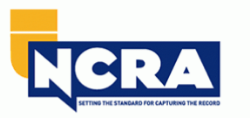Trial Presentation Specialized Help to Elevate Your Courtroom Performance
Trial Presentation Specialized Help to Elevate Your Courtroom Performance
Blog Article
Astound the Jury: Necessary Elements of a Powerful Trial Presentation
Important components such as comprehending the target market, crafting an engaging narrative, and understanding spoken and non-verbal interaction are crucial components of a reliable presentation. As these variables intertwine, they create a cohesive approach that not only educates but likewise engages jurors on numerous levels.

Comprehending Your Audience
Comprehending your audience is a critical aspect of effective trial discussion. An effective discussion depends upon the ability to realize the demographics, worths, and predispositions of jurors. This comprehension notifies how debates are mounted, proof exists, and sob stories are crafted, ensuring that the message resonates with the jurors on a personal degree.
Research study indicates that jurors come from diverse backgrounds and might have varying levels of understanding relating to legal proceedings (trial presentation). Hence, it is important to stay clear of legal lingo that could estrange or perplex them. Rather, using clear, relatable language cultivates involvement and understanding. Furthermore, recognizing the jurors' prospective predispositions and life experiences permits the test presenter to prepare for objections and address worries proactively.
Effective trial presentation also includes observing jurors' responses during the procedures. Involving with jurors as people rather than a collective device is crucial in promoting a strong connection in the court room.

Crafting an Engaging Story
Crafting a compelling narrative is necessary in leading jurors with the intricacies of an instance. A well-structured story not only streamlines complex lawful ideas yet likewise engages jurors on a psychological level, making the info more relatable and unforgettable.
To achieve this, attorneys need to begin by determining the core message they wish to convey. This message should resonate with the jurors' values and experiences, fostering a connection that goes beyond simple truths. The narrative ought to unravel logically, offering events in a clear sequence to stay clear of complication. This sequential approach can assist jurors follow the progression of occasions, stressing reason and result.
Incorporating human components-- such as personal stories or anecdotes-- can further improve the story's influence. These elements evoke empathy, enabling jurors to imagine the consequences of the instance on the real worlds. Additionally, employing a constant theme throughout the discussion reinforces the major debate, making it simpler for jurors to preserve vital factors.
Eventually, a compelling story transforms a trial presentation from a simple recitation of truths into a persuasive tale that captivates the jury, motivating them to ponder with both reason and feeling.
Making Use Of Aesthetic Help
Including aesthetic aids right into a trial discussion can substantially boost jurors' understanding and retention of information. Aesthetic materials such as charts, diagrams, pictures, and videos can transform complex legal concepts and proof into easily digestible styles. By engaging multiple senses, these aids enable jurors to visualize the instance's vital elements, making it easier for them to follow along and understand complex details.
Moreover, well-designed aesthetic help can highlight crucial points and highlight partnerships in between different pieces of proof. As an example, timelines can properly show the series of occasions, while annotated images can clear up certain information relevant to the situation. This not just help in understanding yet also reinforces the narrative offered by the lawyer.
It is essential, nevertheless, to ensure that visual help are relevant, clear, and professionally provided. Extremely complicated or chaotic visuals might bewilder jurors and interfere with the message. When utilized deliberately, aesthetic help serve to enhance the oral disagreements and improve the total impact of the trial discussion. Ultimately, effective aesthetic communication can be an effective device in persuading jurors and assisting them get to informed final thoughts.
Mastering Verbal Communication
Efficient verbal communication is essential in a trial presentation, as it offers as the main means through which attorneys communicate their arguments and connect with jurors. Simpleness in language promotes understanding and assists jurors grasp complicated issues presented throughout the trial.
Additionally, tone and pacing significantly effect how messages are obtained. A positive tone shares authority, while appropriate pacing enables jurors to absorb information without really feeling bewildered. Attorneys ought to go to this site likewise differ their vocal inflections to highlight bottom lines and maintain jurors' rate of interest throughout the discussion.
Furthermore, the company of verbal debates is crucial. Structuring the narrative rationally and coherently helps jurors follow the attorney's logic, making it simpler for them to maintain crucial details. Utilizing persuasive methods, such as narration, can also improve the emotional vibration of the arguments provided, therefore creating a much more extensive link with jurors.
Inevitably, mastering verbal communication not only reinforces a lawyer's instance but also promotes depend on and relationship with the court, significantly enhancing the chances of a positive decision.

Engaging With Body Movement
Nonverbal interaction plays a vital function in test discussions, often communicating messages that words alone can not reveal. Body movement, incorporating motions, posture, faces, and eye get in touch with, dramatically influences how jurors perceive the integrity and genuineness of the presenter. A confident stance, with shoulders back and an open position, can impart depend on, while closed-off body language may suggest defensiveness or uncertainty.

Faces should reflect the feelings connected with the instance, enhancing the story being provided. For circumstances, a genuine expression during a poignant minute can evoke compassion and enhance the sob story. Inevitably, grasping body language is important for effective test presentations, as it enhances spoken communication and establishes an engaging existence that check that resonates with the court.
Conclusion
Finally, astounding the jury demands a calculated method that encompasses recognizing the audience, crafting an engaging narrative, utilizing aesthetic aids, grasping verbal interaction, and engaging with body language. Each component plays an important role in producing a powerful test discussion that resonates with jurors on both psychological and intellectual levels (trial presentation). By incorporating these components successfully, lawyers can considerably boost their ability to convince and influence jury decision-making
Report this page